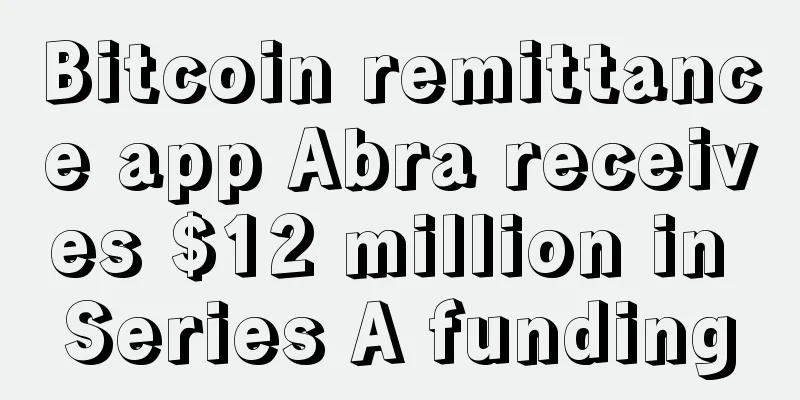The Secret History of Bitcoin (Part 83): Bitcoin in Space? Blockstream’s Leased Satellite Successfully Transmits First BTC Transaction

|
At around 11:00 a.m. on August 14, 2017, Blockstream’s chief strategy officer posted a video of a satellite orbiting the earth on Twitter, with the accompanying text stating that Elon Musk and Space X changed the landscape of the aerospace industry, and Blockstream will do the same in the Bitcoin field. Screenshot from: Blockstream Chief Strategy Officer Samson Mow’s Twitter This meaningful tweet instantly caused speculation in most of the cryptocurrency community. Some people thought that this company, which aims to expand the functionality of the Bitcoin protocol layer, would establish a partnership with Space X, which has nothing to do with it. Considering Bloq's failed satellite project two years ago, most people thought that this might be a preview of Blockstream's intention to transmit Bitcoin transactions via satellite. As expected, the next day the company officially announced the launch of the Blockstream Satellite project and stated that the satellite they rented was launched at 10:00 Beijing time on August 15. According to them, Blockstream's satellite network consists of three synchronous satellites located in different locations on the earth, covering four continents including Africa, Europe, South America and North America, equivalent to two-thirds of the earth. Screenshot from: BitcoinVPS creator Grubles’ Twitter Three days later, BitcoinVPS creator Grubles used computers, satellite dishes, software radio devices, high-frequency head brackets, coaxial cables and other accessories to make a satellite receiving point, and successfully received Bitcoin transactions when the network was disabled. This transaction transmission method has given hope to cryptocurrency enthusiasts in some underdeveloped areas. Tim Akinbo, the only Bitcoin node operator in North Africa, said that "this satellite has great potential" and will benefit people who cannot connect to the Internet (currently the world's network coverage is about 50%); after all, most people who are more in urgent need of using Bitcoin usually live in economically unstable and technologically underdeveloped areas. Screenshot from: Blockstream's official website As the number of Blockstream's leased satellites has increased in recent years, the company's satellite service has expanded to the Asia-Pacific region; not only that, its service has also added support for the Lightning Network. According to official data, most people can currently use their satellite services, except for remote areas in Greenland and Antarctica. On the surface, Blockstream's goal of "connecting everyone on the planet" is almost achieved, but in fact, the vision of making Bitcoin easily accessible to people all over the world is still far away. Putting aside the fact that Bitcoin is not yet widely used, the entry barrier to connecting to satellite services still exists for users in underdeveloped areas; in addition, satellite maintenance and operation are not easy; if Blockstream fails to achieve fee-based profits, the project is likely to be shelved. |
<<: [Wabi.com Disassembly Review] Antminer S19 95T
>>: Analysis of the factors of Filecoin extreme mining
Recommend
Is palmistry accurate? I will tell you the answer today
I believe that whenever people ask this question, ...
Women with these facial features are not those who covet wealth and enjoyment
In this world, some people like to enjoy life, so...
Bitmain Ethereum mining machine E9 computing power revealed: 32 3080s about 3200M?
Wu said blockchain learned that according to the ...
Is it good for a girl to have a broken palm on her right hand? What will happen if a girl has a broken palm on her right hand?
What we often call a broken palm refers to the in...
The woman who is favored by God has a lot of flesh on her nose
Everyone hopes that they can have some advantages...
Two agents in the Silk Road black market case were convicted of embezzlement
Building the Silk Road Ulbricht was born in Texas...
How to identify people: The color you like can teach you how to identify people
How to identify people: The color you like can te...
Do women with square faces look poor? How will their fortune be in their later years?
Everyone wants to get rid of poverty, because no ...
How does the palm of a person who feels exhausted look?
How does the palm of a person who feels exhausted...
How to read palmistry in Yijing? Analysis of palmistry of men and women in Yijing
In traditional Chinese culture, palmistry occupie...
Grayscale BTC Trust increased its holdings of 137 BTC and ETH by 0.49% yesterday
According to news on February 25, Grayscale BTC T...
BTC is expected to make a new difficulty adjustment in 6 hours. The difficulty is expected to increase by 5.37%.
According to the BTC.com page, BTC will undergo a...
The most prosperous woman's face
The most prosperous woman's face After gettin...
Riot, a US-listed mining company, invested $35 million to purchase 15,000 S19 mining machines
According to the official news of Riot Blockchain...
Fortune telling and fortune-telling
For girls, facial scars at least affect their app...









